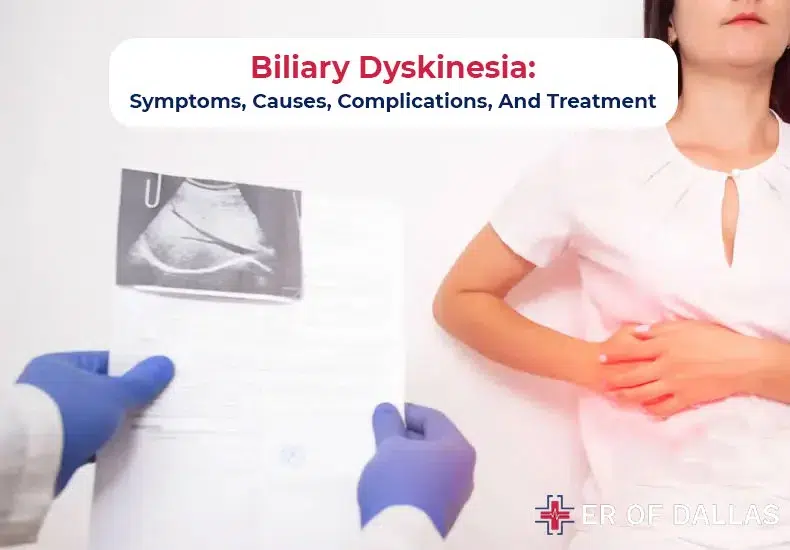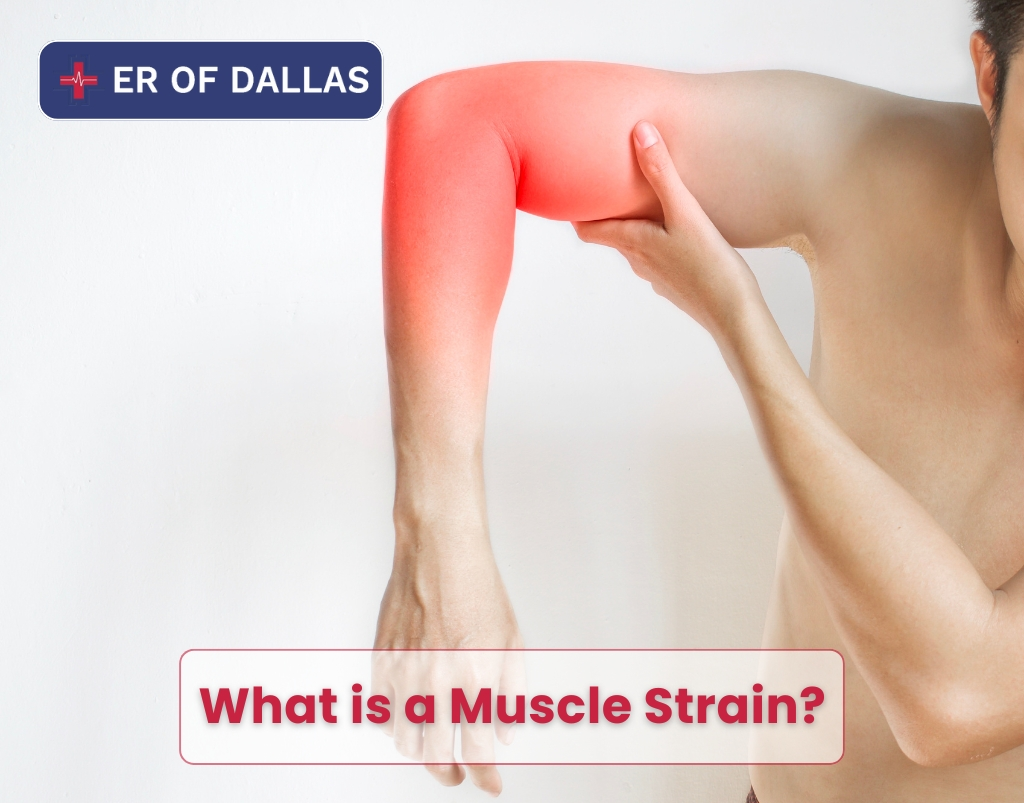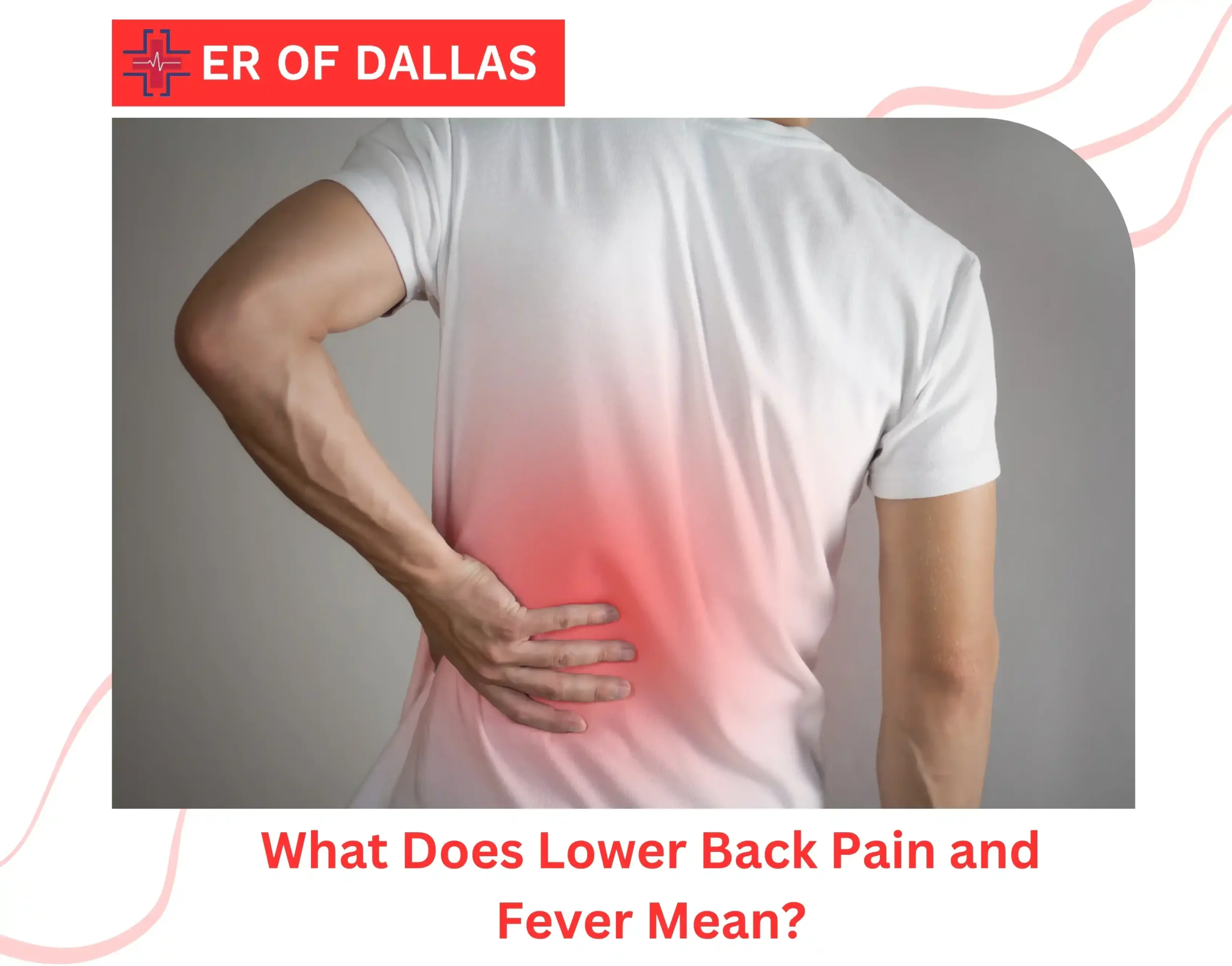Biliary dyskinesia is a condition that causes the gallbladder to function abnormally, leading to various symptoms and discomforts. This article will cover biliary dyskinesia in great detail, covering its causes, therapies, physical effects, possible improvement, and the best diet to maintain the condition.
People can make decisions about their health and seek medical assistance when they have a comprehensive understanding of biliary dyskinesia. We intend to provide readers with enlightening information to help them on their journey to better health and wellbeing by addressing their concerns and questions about this illness. Do not delay in seeking medical attention if you exhibit symptoms of gallbladder illness.
What Is Biliary Dyskinesia?
Biliary dyskinesia is a functional condition mainly affecting the gallbladder. The sphincter, a little muscle located where your gallbladder empties into your small intestine, may occasionally sustain harm from it. A functional dysfunction is a problem with an organ or muscle’s capacity to function. (This is not the same as a mechanical impediment, such as a gallstone.)
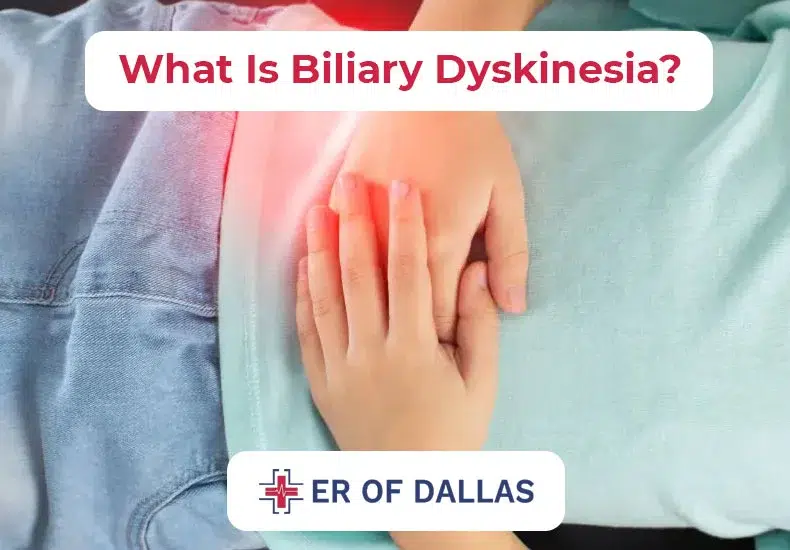
The gallbladder’s primary function is to store the bile that the liver produces and move it to the small intestine to help digestion. Hormones produced by your small intestine notify your gallbladder when it’s time to begin the breakdown process. Your gallbladder contracts to push bile into the bile ducts, which will then transport it to your small intestine.
Biliary dyskinesia is the name for a disturbance in these processes. Somewhere along the way, something needs to be fixed. The problem may lie with the nerves that are supposed to receive the signal, the muscles that are supposed to contract, or the hormonal signals. Even though they may first struggle to determine which illness your gallbladder is experiencing, medical practitioners can choose that it is not excreting enough bile.
Who Gets Biliary Dyskinesia?
Only recently, particularly in the United States, have functional gallbladder issues drawn more attention and coverage. It could be more precise if biliary dyskinesia is genuinely becoming more common or is just receiving greater attention, or if this pattern is unique to the US. It’s uncertain if certain people will be more affected than others. Obesity and diabetes, however, might be risk factors.
Researchers have shown that obesity affects metabolism. It may encourage persistent inflammation and lead to fat buildup within your organs. Both factors affect gallbladder motility or the movement of your gallbladder. Static bile that has become concentrated and sludgy might cause gallstones.
Biliary Dyskinesia: How Does It Feel?
Most people have gallbladder pain in the upper right region of the abdomen, just under the right rib cage. However, some report feeling it in the middle of their belly, while others feel it in their back or right shoulder. It happens in spurts, sometimes lasting up to several hours. For the first twenty minutes, the discomfort increases gently before progressively decreasing.
Episodes don’t happen daily, but they do happen occasionally. They most frequently occur after meals, particularly rich or fatty ones. The gallbladder is meant to contract at this point to discharge the bile into your intestine. Usually, the pain is bad enough to keep you from doing your normal tasks. It can take you to the emergency department or wake you up in the middle of the night. Vomiting and nausea are also frequent.
How Does Biliary Dyskinesia Affect My Body?
Your gallbladder gets more significant and fuller (distended) due to the accumulation of bile, which causes it not to drain properly into your bile ducts. This is like having your gallbladder obstructed by a gallstone. Your gallbladder may enlarge and hold onto bile, causing cholecystitis, an infection that can cause discomfort, swelling, and inflammation.
As your gallbladder tries to constrict, you may feel queasy and may have discomfort in your upper abdomen, especially after eating. Medical professionals refer to this as biliary colic. Inadequate bile in the stomach can also cause poor digestion, bloating in the belly, nausea, and vomiting, particularly after eating fatty foods.
The consensus has been that gallstones (cholelithiasis) are nearly usually the cause of biliary discomfort. However, medical professionals are recognizing that might not be the case. There is growing recognition that biliary dyskinesia frequently causes gallbladder illness. It commonly affects both adults and older children.
Biliary Dyskinesia Symptoms
Typical symptoms of biliary dyskinesia include:
- Pain in the upper right quadrant of the abdomen.
- The build-up of pain over some time.
- Stomach bloating.
- Symptoms include nausea and vomiting.
- The loss of weight was unintended.
Some people also report:
- Having headaches.
- Tiredness.
- Acid reflux is a chronic condition.
- IBS and functional indigestion.
- A feeling of anxiety or depression.
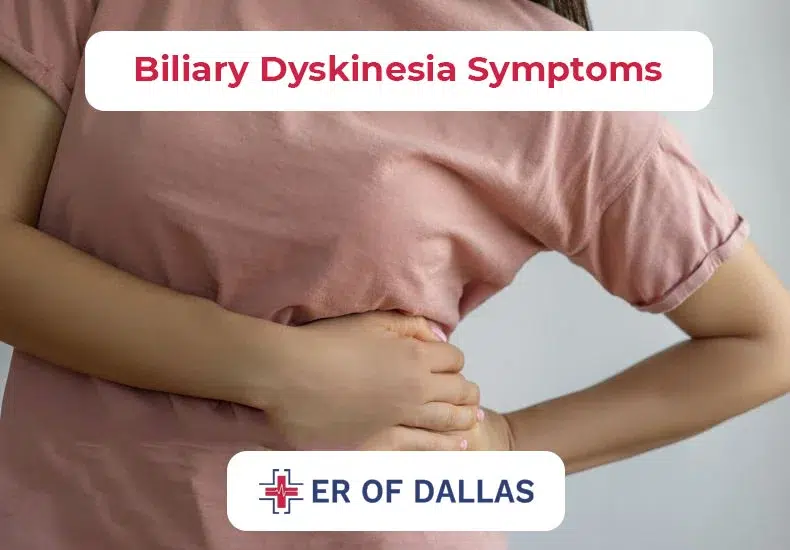
These symptoms could appear and disappear, stay consistent, or even sometimes get worse. Under specific conditions, the pain could get terrible and come with a fever and shivering.
Additionally, patients may experience jaundice, defined as a yellowing of the skin and eyes caused by an increase in the blood level of bilirubin.
People with biliary dyskinesia may also have excessive weariness and exhaustion besides their physical symptoms, which can make it difficult for them to meet the demands of their daily routine.
Besides the physical discomfort associated with biliary dyskinesia, individuals may have psychological symptoms like anxiety and sadness.
Although there is no known cure for biliary dyskinesia, doctors can manage its symptoms with medication, dietary modifications, lifestyle adjustments, and, in some instances, surgery. Patients receiving the right treatment have a fair chance of experiencing comfortable lives every day.
Biliary Dyskinesia Causes
Most medical professionals are unaware of the underlying reasons for motility issues. Specific nerves, such as the vagus nerve, can malfunction occasionally. However, it’s typically tough to pinpoint the precise location of the issue. The particular motility of your gallbladder or biliary sphincter may sometimes be impacted by a more widespread metabolic problem or an intestinal motility issue.
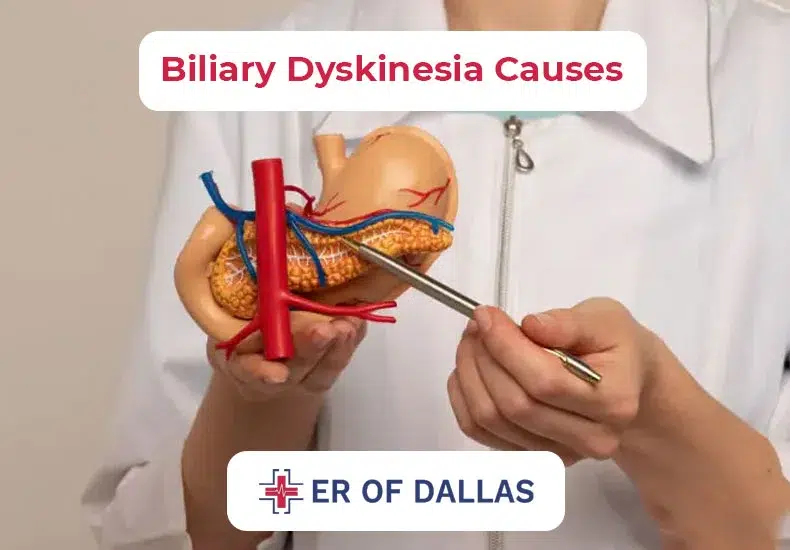
It is uncertain what causes explicitly biliary dyskinesia. One potential explanation is an underlying metabolic condition that interferes with food passage via the gastrointestinal (GI) tract. Another cause is an issue with the gallbladder itself.
The majority of people with biliary dyskinesia are older adults and children. It is a typical pediatric diagnosis. Biliary dyskinesia has emerged as the most frequent cause of gallbladder removal in certain pediatric hospitals.
Biliary Dyskinesia Treatment
Evidence does not support the idea that biliary dyskinesia will resolve independently. It usually takes at least three months for biliary dyskinesia symptoms to be identified. By now, most people don’t want to wait for it to go away. If so, it was probably a different kind of motility impairment brought on by transient circumstances rather than an actual functioning disorder.
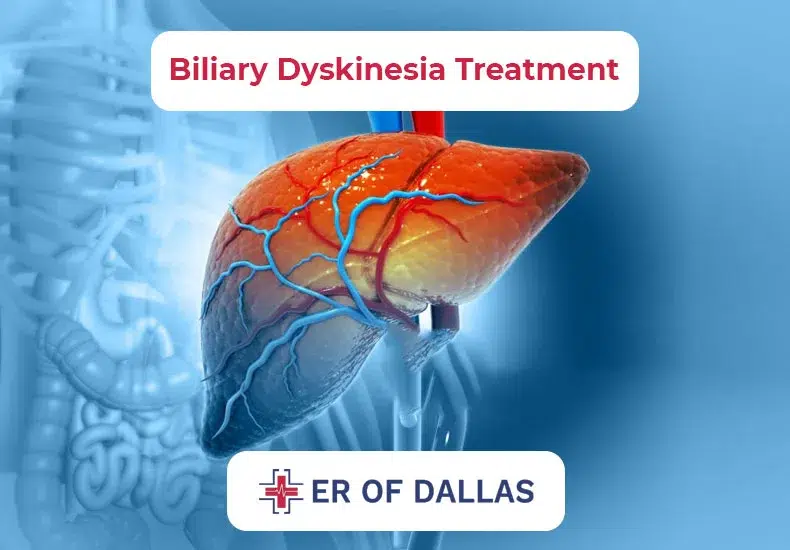
Gallbladder excision (cholecystectomy) is the only known successful treatment for gallbladder biliary dyskinesia. You can typically return home the same day after this laparoscopic procedure, which is less invasive. Small keyhole incisions are used during laparoscopic surgery, which heals more quickly and causes less discomfort and scarring. You don’t need your gallbladder to survive. Bile will now travel straight to your small intestine from your liver.
Should your medical professional conclude that the sphincter muscle is the source of the motility impairment, an endoscopic treatment can broaden or open this muscle. Usually, this treatment is carried out if your symptoms still exist after having your gallbladder removed. It is challenging to diagnose sphincter dysfunction, but it is also uncommon for the motility issue to be limited to the sphincter. Frequently, your gallbladder is also impacted. Biliary dyskinesia treatment without surgery is not possible in any case. A sphincterotomy can help prevent spasms by cutting the sphincter of the Oddi muscle if symptoms don’t fully resolve.
How Is Biliary Dyskinesia Diagnosed?
Diagnosing functional diseases such as biliary dyskinesia involves multiple processes. Healthcare professionals must:
- Verify that the pain you’re experiencing is biliary and not just any other kind of stomach ache.
- Verify that you have no gallstones or other specialized forms of biliary disease.
- Verify that not enough bile is being expelled by your gallbladder.
- Verify that the contraction of your gallbladder causes your symptoms.
- Verify that nothing other than drugs or other factors is influencing the motility of your gallbladder.
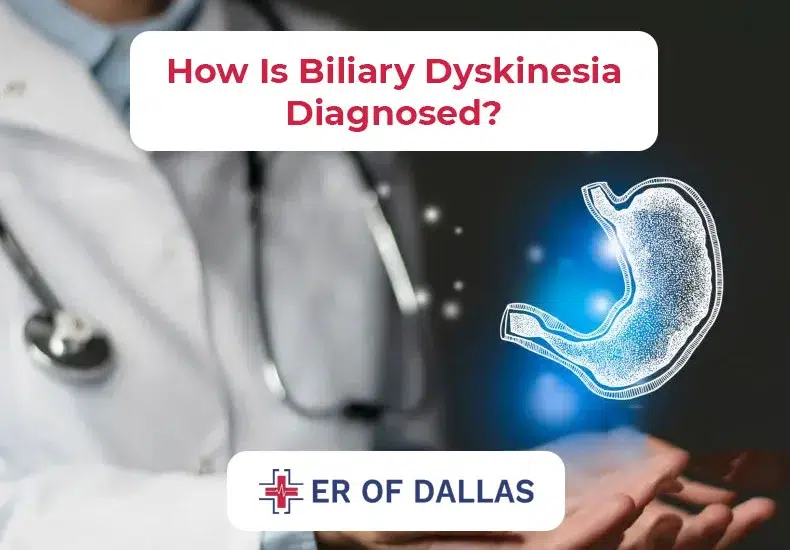
Symptom Check
They will start by inquiring about your symptoms and observing the telltale signs of biliary colic. Among these requirements are:
- Upper abdominal pain that typically affects the right side.
- Pain that lasts for at least thirty minutes and flares up periodically.
- Pain steadily increases to a moderate-to-severe degree.
- Posture adjustments, antacids, vomiting, or bowel motions do not relieve pain.
- There have been consistent episodes for a minimum of three months.
Disease Check
Your healthcare professional will check to rule out other prevalent causes of biliary pain once they have determined that your symptoms satisfy these requirements. They’ll accept:
- Blood tests to measure liver and pancreatic enzyme levels. Elevated levels of enzymes may suggest an issue with any of these organs or a bile backup (particularly elevated bilirubin).
- An ultrasound of the abdomen to examine the bile ducts and gallbladder. They will search for structural issues such as gallstones, thickness of the gallbladder wall, or dilated bile ducts as reasons for biliary pain.
Gallbladder Function Check
The gallbladder function test will be the next step if your results from the ultrasound and blood tests are normal. Medical professionals use a HIDA scan, a nuclear medicine imaging test. A radioactive isotope, or tracer, is injected into your vein by the technician during the test. After passing through your biliary system, the tracer is read by a computer scanner, which displays images on a screen.
Healthcare professionals add a cholecystokinin check, an additional step to the test, to assess your gallbladder function. Cholecystokinin is the hormone that instructs your gallbladder to contract and release bile into your bile ducts. When your gallbladder contracts, your technician will inject cholecystokinin into your vein and take further pictures. They’ll watch and record their measurements.
Doctors at the ER of Dallas frequently can only identify the sphincter of Oddi dysfunction after ruling out all other potential reasons for biliary tree motility problems. In some instances, they even diagnose patients after the gallbladder has been removed but before their symptoms have improved.
Is Biliary Dyskinesia Dangerous?
The gallbladder is meant to contract at this point to discharge the bile into your intestine. Usually, the pain is bad enough to keep you from doing your normal tasks. It can take you to the emergency department or wake you up in the middle of the night. Vomiting and nausea are also frequent.
A Diet that Helps You Treat Biliary Dyskinesia
When you eat, the gallbladder releases bile, which helps you digest the fat in food. If you have an inflamed gallbladder, this may cause pain. A low-fat diet may rest your gallbladder so you can start healing. Your doctor and dietitian can help you make an eating plan that does not irritate your digestive system. Always talk with your doctor or dietitian before you change your diet. Fruits, vegetables, seafood, lean meats, low-fat dairy products, and cooked beans are examples of healthy eating. Find out if you require a specific diet. Your doctor could advise you to follow a low-fat diet. Pick healthy fats like almonds, avocados, canola, and olive oil.
Eat 4 to 6 small meals and snacks each day instead of three large meals.
Choose lean meats.
- Cut off all the fat you can see.
- Eat poultry, like chicken, duck, and turkey without the skin.
- Many types of fish, such as salmon, lake trout, tuna, and herring, provide healthy omega-3 fat. But, avoid fish canned in oil, such as sardines in olive oil.
- Bake, broil, or grill meats, poultry, or fish instead of frying them in butter or fat.
Choose skim or low-fat milk, yogurt, cheese, other milk products, or fortified soy beverages.
- Read the labels on cheeses, and choose a reduced-fat option.
- Try fat-free sour cream, cream cheese, or yogurt.
- Avoid cream soups and cream sauces on pasta.
- Eat low-fat ice cream, frozen yogurt, or sorbet. Avoid regular ice cream.
Final Thoughts
The characteristics of gallbladder pain are distinct. When you are diagnosed with biliary colic, both you and your doctor at the ER of Dallas will probably initially think of gallstones. That is true. But what happens if, despite your symptoms, they cannot identify you with gallstones? It’s conceivable that your gallbladder isn’t functioning correctly. Diagnosing biliary dyskinesia is a process. If the diagnosis matches, the treatment will probably be adequate.

